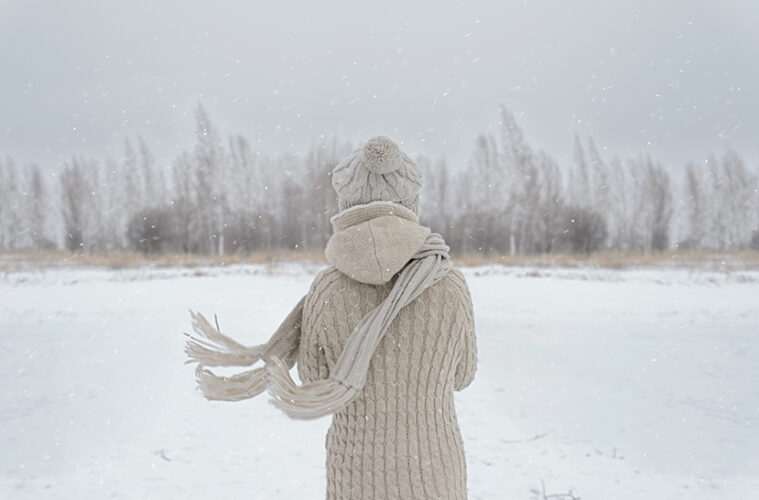BY TRACY McCUBBIN, MD, ABOIM, ABEM
Tis the season to be jolly? A time filled with family, friends and merriment? Unfortunately, not for everyone.
Do you look forward to the holidays or do you, like many adults, feel a sense of dread when the decorations come out and Christmas music is playing everywhere? For some people the holidays can be a period of painful reflection, sadness, loneliness and depression.
Seasonal Affective Disorder (SAD) is a real entity. As the daylight hours shrink and the nights grow longer, this diminished light affects our mood. The cycle begins with the time change when we “fall back.” The light hours continue to dwindle through to the holidays which coincide with peak darkness. SAD seems to be linked to these seasonal changes in light. It is a type of depression which is often cyclical and recurrent.
What causes SAD?
While scientists do not fully understand what causes SAD, research indicates that people who are affected have reduced activity of the brain chemical (neurotransmitter) serotonin which helps regulate mood. Sunlight controls the levels of signaling molecules that help to maintain normal serotonin levels. In people with SAD, this regulation does not function properly and results in decreased serotonin levels in the winter months.
Other findings suggest that people with SAD produce too much melatonin – the hormone that is central for maintaining the normal sleep-wake cycle. In people with SAD, the changes in these important hormones disrupt normal daily rhythms. As a result, they do not adjust to the seasonal changes in day length leading to sleep, mood and behavior changes.
Research shows that Vitamin D promotes serotonin activity and deficits in Vitamin D can exacerbate these problems. The sunshine vitamin, D is produced when our skin is exposed to sunlight. With less daylight in the winter months, it is important to supplement natural Vit D with at least 2000IU Vitamin D with K2 daily.
What does SAD feel like?
Some of the symptoms you may experience if you have SAD:
• Feeling depressed most of the day, nearly every day
• Losing interest in activities you once enjoyed
• Feeling sluggish or agitated
• Having low energy
• Feeling hopeless or worthless
• Having difficulty concentrating
For winter-patterned SAD, additional specific symptoms may include:
• Sleeping too much or too little
• Overeating, particularly with a craving for carbohydrates
• Weight gain
• Social withdrawal
How to manage SAD?
Connection
So, this holiday season, when you are feeling like hibernating and skipping that holiday party, think twice. Loneliness and isolation can be more harmful to your health than smoking! Social connections have been proven to reduce feelings of anxiety and depression, regulate emotions and lead to higher self-esteem and empathy.
Food and Mood
It is wise to watch what you eat at these holiday gatherings. Reducing your consumption of highly processed foods and choosing healthier options can improve your mood. Keep your spirits up with these healthy food swaps.
Seafood – Aim to swap any processed meats or fish for wild-caught salmon, mackerel, anchovies, herring and sardines. These fish contain high levels of selenium and vitamin B12, two nutrients that have been proven to boost your mood.
Cruciferous Vegetables – Crucifers such as broccoli, cabbage and brussels sprouts are high in phytochemicals that aid in estrogen metabolism in the liver. This is important for a positive mood since excess estrogen can promote anxiety.
Nuts and seeds – Swap any unhealthy snacks for nuts and seeds. They contain high levels of mood-balancing nutrients such as magnesium, selenium and zinc, and will also satisfy any cravings!
Stay hydrated
Make sure you drink some water before going to the party. We need approximately 64 ounces of water daily. And watch your alcohol intake. Alcohol is a depressant and a diuretic. If you choose to have a drink, limit it to one and have a glass of water after.
Exercise
Exercise is the best medicine to combat depression. Regular exercise is a must. Aim for 150 minutes per week for maximum benefit. If you cannot make it to the gym, try scheduling a short walk with a friend to combine social connection and a little exercise!
Light therapy
Since the 1980s, light therapy has been a mainstay for the treatment of SAD. The goal is to expose sufferers to a bright light every day to make up for the diminished natural sunshine in the darker months.
For this treatment, the person sits in front of a very bright light box (10,000 lux) daily for 30 minutes in the morning hours. You can pick one up on Amazon for under fifty dollars!
Temper your holiday expectations
Sometimes having high hopes for the season can lead to holiday stress and sadness. The over-commercialization of the holidays can create an unreasonable expectation that people are supposed to feel nonstop joy and holiday cheer. This can create pressure to feel a specific way and add yet another stressor to an already hectic time of year.
If your SAD symptoms are overwhelming and you cannot manage them alone, it is important to seek out a therapist to help address these issues.
If you would like more information on this important topic, give our office a call. Dr. Tracy has 30 years of experience in medicine and has suffered from SAD in the past. We would love to help you have your best holiday season!
Happy holidays from all of us at Radiance Functional Medicine.

